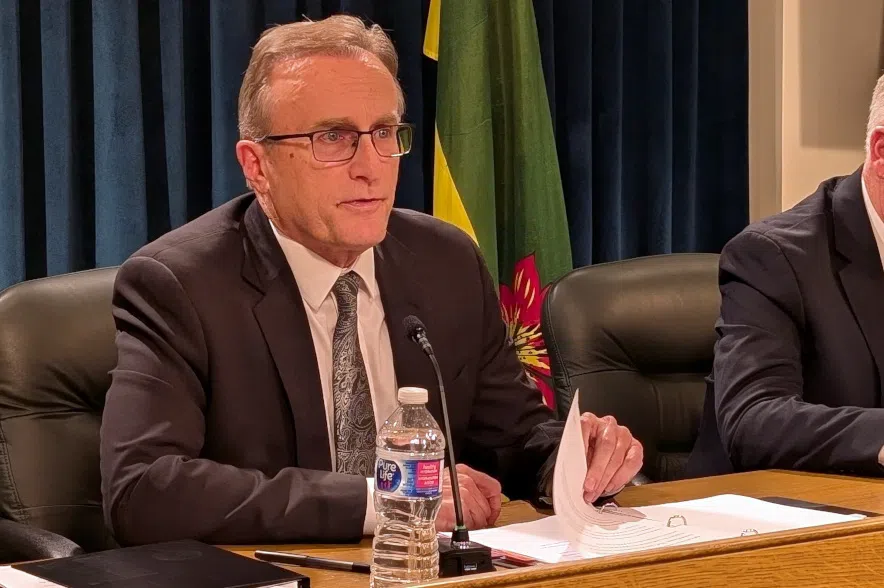Crop insurance payouts and higher health expenses contributed to a significantly higher deficit forecast for the provincial government at the mid-year financial report on Thursday.
The report showed a projection of a $743.5 million deficit, compared to the $353.8 million deficit projected after the first-quarter, and the $273.2 million deficit projected in the spring budget.
Higher crop insurance payouts were the main driver of the increase, according to the province. The extremely dry weather in some areas knocked down crop yields and quality for many farmers, especially with canola crops.
As such, expenses under the agriculture file increased by $385 million from the budget. It was explained that money doesn’t come out of the general revenue fund, it comes out of the crop insurance fund, but it’s reported within summary financials.
Finance Minister Jim Reiter said the situation with crop insurance is as unpredictable as the weather it’s predicated on.
“If this becomes more of the long-term price that’s going to be inflicted on us, that’s going to be reflected,” he said, explaining that the cost of crop insurance is predicted using a 10-year average.
“For example, this year’s numbers, well now the 10 years ago will drop off and this year will be part of the 10-year average so it will have its impact on the numbers.”
As for the deficit overall, Reiter said it’s just par for the course.
“We have an export-based economy – agriculture, mining, oil and gas – where it’s going to fluctuate, it’s the nature of the beast. It’s my job now to try to mitigate that as much as possible and hope that we get to a good bottom line,” he said.
Reiter pointed to last year, when there was also an adjustment at mid-year and a deficit was expected, but then the province ended the year with a small surplus.
“(The deficit is) certainly larger than was budgeted but, based on past history, it’s certainly manageable,” said Reiter.
In 2023, the mid-year report showed an $853 million dollars increase to expenses because of higher crop insurance payouts.
Operating expenses at the province’s jails also went up, and so did costs around fighting wildfires, adding $128 million to the province’s expenses. Health costs also went up by $100 million due to higher costs related to more health-care providers working, and more people using health-care professionals’ services.
Overall, during the first half of the year, the provincial government said its expenses went up $745.5 million, but revenue increases of $275.1 million helped to offset some of that.
Things like corporate income taxes increased to help with revenue, as well as insurance and fee income.
There were some hindrances to revenue — PST didn’t grow as quickly as was expected, potash revenue was down due to lower prices, and oil prices were also down in the first half of the year.
Accountability and transparency
Sask. NDP Finance Critic Trent Wotherspoon called the mid-year update “troubling,” he said it’s almost unbelievable that the Sask. Party government didn’t know before the election campaign that the forecasts would have been off by that much.
“You just can’t trust the Sask. Party with their math and certainly you can’t trust them with our finances or our hard-earned public dollars,” Wotherspoon said.
He said things like crop insurance and crop quality are tracked in a number of different ways, and the numbers on this front should have been adjusted before the election.
“What we’re talking about was a real drought that occurred in July of this year. Of course, we were off to a really good start with growing conditions and good rain, and then the taps just shut off … the number should have been adjusted in the budget a long time before going into an election,” he said.
He said the people of the province should have been able to go into the provincial election with a more accurate picture of these numbers.











